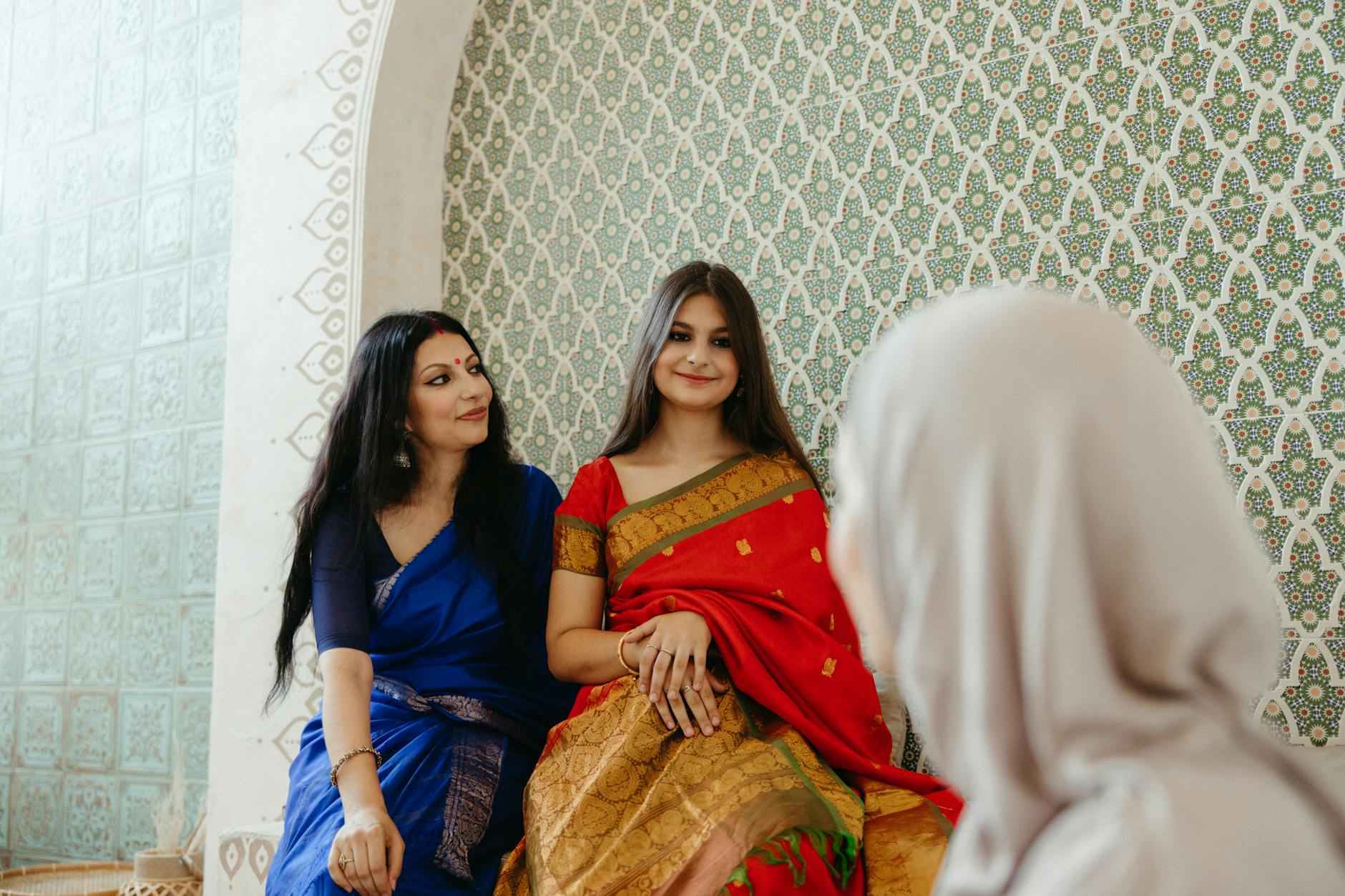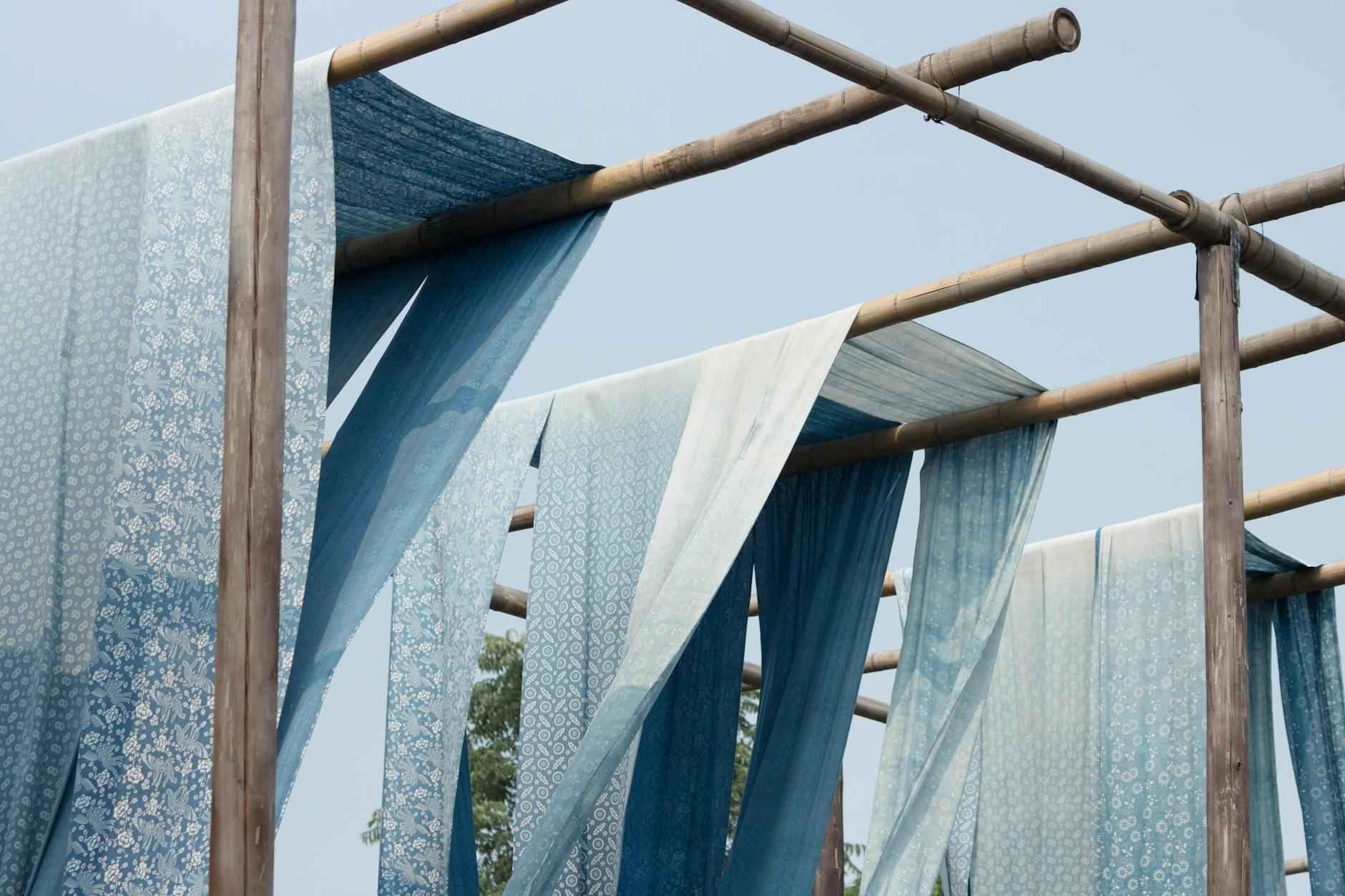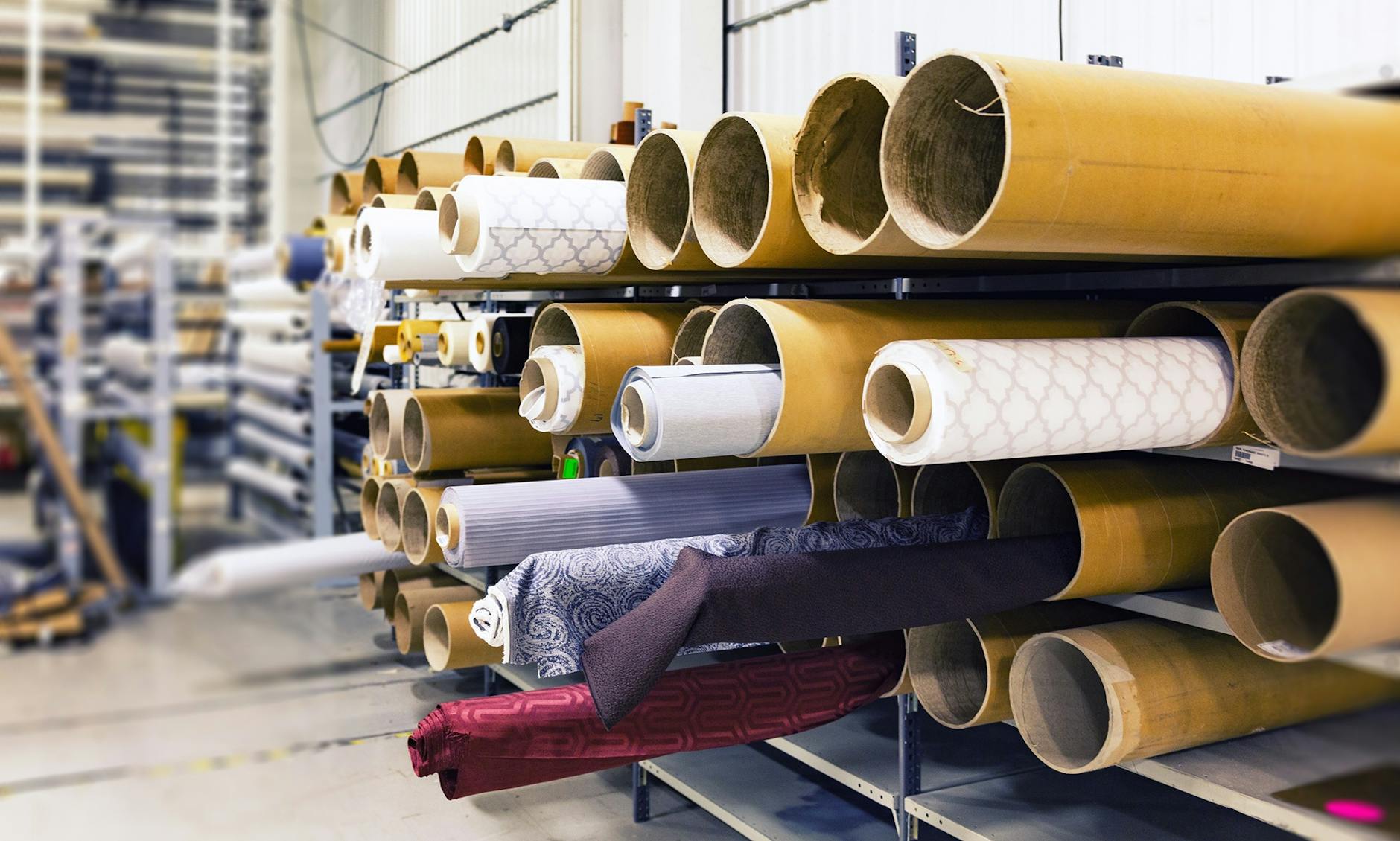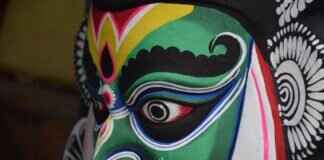This article delves into the vibrant world of Indian textiles in New York, highlighting key locations, cultural significance, and shopping tips for enthusiasts and newcomers alike.
Understanding Indian Textiles: A Cultural Overview
Indian textiles are more than just fabrics; they are a reflection of the country’s rich heritage. Each region of India has its own unique textile traditions, influenced by local culture and history. From the intricate brocades of Banaras to the vibrant tie-dye of Rajasthan, these textiles tell stories of the artisans who create them. The significance of textiles in Indian culture is profound, often representing social status, regional identity, and even religious beliefs. For example, the khadi fabric, which is hand-spun and hand-woven, symbolizes India’s struggle for independence and self-reliance. In New York, the appreciation for these textiles is growing, as more people seek to understand their cultural context and aesthetic value.
The History of Indian Textiles in New York
The arrival of Indian textiles in New York can be traced back to the late 19th century when Indian immigrants began to establish businesses. These early shops catered primarily to the Indian diaspora, but over time, they attracted a broader audience, intrigued by the vibrant colors and intricate patterns. The 1970s and 1980s saw a surge in interest, coinciding with the rise of the counterculture movement, where Indian textiles became popular among fashion-forward individuals. Today, the landscape of Indian textiles in New York is a testament to the city’s diverse cultural fabric, showcasing a blend of traditional and contemporary styles.
Top Stores for Indian Fabrics in New York
- Kalpana: Known for its exquisite silk sarees and handloom fabrics, this store is a favorite among those looking for authentic Indian textiles.
- Indian Textiles: Located in the heart of Manhattan, this shop offers a wide range of fabrics, from cotton to silk, catering to both fashion designers and individual customers.
- Desi Bazaar: A treasure trove for unique finds, including embroidered fabrics and traditional garments, Desi Bazaar is perfect for those looking to explore the diversity of Indian textiles.
Exploring Indian Fashion Designers in NYC
The influence of Indian fashion designers in New York is undeniable. Designers like Manish Arora and Sabyasachi Mukherjee have made significant contributions to the fashion scene, incorporating traditional Indian textiles into modern designs. Their collections often feature a mix of vibrant colors and intricate patterns, appealing to a global audience. The presence of these designers in New York has not only elevated the status of Indian textiles but has also fostered a greater appreciation for the craftsmanship behind them. As more designers emerge, the fusion of Indian textiles with contemporary fashion continues to evolve, creating exciting new trends.
The Role of Indian Textiles in Contemporary Fashion
Indian textiles are increasingly being recognized in the realm of contemporary fashion. Designers are blending traditional techniques with modern aesthetics, resulting in unique pieces that resonate with today’s consumers. Fabrics like chanderi and kantha are being reimagined in innovative ways, appealing to a younger audience. Events such as New York Fashion Week often showcase collections that celebrate this fusion, highlighting the versatility and beauty of Indian textiles. This growing trend not only promotes sustainability by encouraging the use of traditional methods but also supports local artisans, ensuring their skills are passed down through generations.
Where to Find Sustainable Indian Textiles
As the fashion industry shifts towards sustainability, many stores in New York are embracing eco-friendly practices. Brands like Amrapali focus on sustainable sourcing and production methods, offering beautiful textiles that are both stylish and environmentally responsible. Shoppers can find a range of sustainable options, from organic cotton to recycled materials, ensuring that their purchases contribute positively to the planet. By choosing sustainable Indian textiles, consumers can support ethical practices while enjoying the rich heritage of Indian craftsmanship.
Craftsmanship Behind Indian Textiles
The craftsmanship involved in creating Indian textiles is a labor of love, often passed down through generations. Techniques such as block printing, weaving, and embroidery require immense skill and patience. Each piece is often a collaborative effort, with artisans working together to create stunning fabrics. In New York, workshops and exhibitions often highlight these artisans, providing insight into their processes and stories. By understanding the craftsmanship behind these textiles, consumers can appreciate their value beyond mere aesthetics.
Popular Fabric Types in Indian Textiles
Indian textiles offer a diverse range of fabric types, each with unique characteristics. Silk, known for its luxurious feel, is often used in formal wear and traditional garments. Cotton, on the other hand, is breathable and versatile, making it ideal for everyday clothing. Wool is commonly used in colder regions, with intricate weaving techniques that create warmth and style. Understanding these fabrics can help consumers make informed choices when shopping for Indian textiles, ensuring they select the right material for their needs.
Events Celebrating Indian Textiles in New York
New York hosts a variety of events that celebrate the beauty and craftsmanship of Indian textiles. From exhibitions at renowned museums to fashion shows featuring Indian designers, there are ample opportunities to explore this vibrant culture. Events like the India Day Parade and the South Asian Arts Festival often showcase traditional textiles, allowing attendees to immerse themselves in the rich heritage of Indian fabrics. Participating in these events not only fosters a deeper appreciation for Indian textiles but also connects individuals with the community that supports them.
Tips for Shopping Indian Textiles in NYC
Shopping for Indian textiles can be an exciting yet overwhelming experience. To ensure a successful shopping trip, it’s essential to do a bit of research beforehand. Familiarize yourself with different fabric types and their uses, and don’t hesitate to ask store owners about the origins of their textiles. Negotiating prices is common in many shops, so be prepared to engage in a friendly discussion. Always look for authenticity labels or certifications to ensure you’re purchasing genuine products. By following these tips, shoppers can navigate the vibrant world of Indian textiles with confidence.
Integrating Indian Textiles into Your Wardrobe
Incorporating Indian textiles into your wardrobe can add a unique touch to your style. Mixing traditional fabrics with contemporary pieces creates a visually appealing contrast. For example, pairing a block-printed skirt with a simple white tee can create a chic and casual look. Accessories like scarves or jewelry made from Indian textiles can also elevate an outfit without overwhelming it. By experimenting with different combinations, individuals can showcase the beauty of Indian textiles while expressing their personal style.
The Future of Indian Textiles in New York
The future of Indian textiles in New York is bright, with increasing interest from consumers and designers alike. As sustainability becomes more important, the demand for ethically sourced and produced textiles will likely rise. Innovations in textile technology may also lead to exciting new developments, blending traditional craftsmanship with modern techniques. With a growing community of artisans and designers, Indian textiles are poised to continue making a significant impact on the fashion scene in New York and beyond.

Understanding Indian Textiles: A Cultural Overview
Indian textiles represent a vibrant blend of history, culture, and artistry. They are not merely fabrics; they are woven stories that reflect the diverse traditions and regional identities of India. From the intricate patterns of Banarasi silk to the earthy tones of Kutch embroidery, each textile has its own narrative, steeped in centuries of craftsmanship and cultural significance.
The significance of textiles in Indian culture cannot be overstated. Historically, textiles were used not only for clothing but also as a medium for expressing social status and identity. The art of weaving has been practiced in India for thousands of years, with references found in ancient texts such as the Vedas and the Mahabharata. Different regions developed their unique weaving techniques, dyeing methods, and embroidery styles, making Indian textiles incredibly diverse.
As India evolved through various historical phases, including the Mughal era and British colonial rule, textiles adapted to reflect changing tastes and technologies. For instance, the Mughal period saw the introduction of luxurious fabrics adorned with intricate designs, while the British era brought about industrialization, leading to the mass production of textiles. Despite these changes, traditional techniques have been preserved and continue to thrive, showcasing the resilience of Indian artisans.
In contemporary times, Indian textiles have gained international acclaim, influencing global fashion trends. Designers worldwide are increasingly incorporating Indian fabrics into their collections, appreciating their rich textures and vibrant colors. This fusion of traditional and modern aesthetics has opened up new avenues for Indian textiles, allowing them to reach a broader audience.
Indian textiles also play a crucial role in various cultural and religious ceremonies. For example, sarees are often worn during weddings and festivals, symbolizing grace and tradition. Similarly, fabrics like khadi hold historical significance, representing India’s struggle for independence and self-reliance. Every piece of textile carries with it a story, a memory, and a connection to the past.
Moreover, the rise of sustainability in fashion has brought renewed attention to Indian textiles. Many artisans are now focusing on eco-friendly practices, using natural dyes and organic materials. This shift not only preserves traditional methods but also promotes a more sustainable approach to fashion, resonating with environmentally conscious consumers.
As we explore the world of Indian textiles, it becomes clear that they are much more than mere decorative items. They are an integral part of India’s cultural heritage, embodying the spirit and creativity of its people. The evolution of these textiles, from ancient times to the modern era, reflects the dynamic nature of Indian culture and its ability to adapt while remaining rooted in tradition.
The History of Indian Textiles in New York
The journey of Indian textiles in New York is a captivating saga that intertwines cultural exchanges, migration, and the evolution of fashion. The roots of Indian textiles in this vibrant city can be traced back to the early 20th century, when a wave of Indian immigrants began to settle in the United States. These immigrants brought with them not only their skills but also their rich traditions in textile production, which would eventually flourish in the bustling streets of New York.
In the 1960s and 1970s, the counterculture movement in America played a pivotal role in popularizing Indian textiles. As young people sought alternatives to mainstream fashion, they turned to the colorful and intricate designs of Indian fabrics. Shops began to emerge, showcasing handwoven saris, block-printed cottons, and vibrant silks, appealing to a growing audience eager for unique and ethically sourced clothing.
As the years progressed, the demand for Indian textiles in New York only grew. By the 1980s, several boutiques specializing in Indian fabrics had opened their doors, offering everything from traditional garments to contemporary fashion. These shops became cultural hubs, where people could not only purchase beautiful textiles but also learn about the stories and artisans behind them.
Throughout the 1990s and early 2000s, Indian textiles gained further recognition in the fashion industry. Designers began to incorporate Indian fabrics into their collections, celebrating the rich heritage and craftsmanship that these textiles represent. This period saw a significant shift, as Indian textiles transitioned from being niche products to becoming integral components of mainstream fashion.
Today, New York boasts a diverse array of stores dedicated to Indian textiles, each offering a unique perspective on this rich cultural heritage. From high-end boutiques to local markets, the options are plentiful for those looking to explore the beauty of Indian fabrics. Not only do these shops provide a platform for traditional artisans, but they also foster a sense of community among those who appreciate the artistry of Indian textiles.
Moreover, the rise of e-commerce has further expanded the reach of Indian textiles beyond New York. Many local shops now offer online platforms, allowing customers worldwide to access these exquisite fabrics. This digital presence has not only increased sales but has also raised awareness about the significance of Indian textiles, promoting a greater appreciation for their cultural value.
In conclusion, the history of Indian textiles in New York is a testament to the power of cultural exchange and the enduring appeal of craftsmanship. As the city continues to embrace diversity and creativity, Indian textiles remain a vibrant part of its fabric, reflecting the stories, traditions, and artistry of a rich cultural heritage.
Top Stores for Indian Fabrics in New York
New York City is a vibrant hub where cultures converge, and one of the most exciting aspects of this cultural tapestry is the availability of Indian fabrics. For those looking to explore authentic textiles, the city offers a plethora of stores that specialize in these exquisite materials. This section highlights some of the best places to find Indian fabrics, detailing their unique offerings and specialties.
- Kalpana – Located in the heart of the East Village, Kalpana is renowned for its extensive collection of handwoven textiles. The store specializes in traditional Indian fabrics such as cotton, silk, and linen, often sourced directly from artisans in India. Customers can find everything from vibrant sarees to unique home décor items, all showcasing the intricate craftsmanship that Indian textiles are known for.
- Indian Textiles and Crafts – Situated in Jackson Heights, this store is a treasure trove for fabric enthusiasts. It offers a wide range of Indian fabrics, including block-printed cottons, embroidered silks, and luxurious brocades. The knowledgeable staff is eager to assist customers in selecting the perfect materials for their sewing projects, making it a favorite among local designers and hobbyists alike.
- Desi Boutique – A popular destination in Astoria, Desi Boutique not only sells fabrics but also provides an array of ready-to-wear clothing inspired by Indian designs. Their fabric collection includes a variety of prints and patterns, perfect for those looking to create custom outfits. The boutique often hosts workshops, making it a great place to learn about Indian textile techniques.
- Rangoli – This store in the Upper West Side is celebrated for its vibrant selection of fabrics and accessories. Rangoli specializes in hand-dyed textiles and features a stunning array of colors and patterns. Customers can find unique pieces for both fashion and home décor, along with a selection of traditional Indian jewelry to complement their purchases.
- New York Fabric Center – Located in the bustling Garment District, this store is a go-to for fashion designers seeking high-quality Indian fabrics. With an impressive selection of silks, chiffons, and embroidered materials, the New York Fabric Center caters to both professionals and DIY enthusiasts. Their extensive inventory ensures that customers can find exactly what they need for any project.
These stores not only offer an impressive selection of fabrics but also serve as cultural hubs where customers can learn about the rich history and significance of Indian textiles. Whether you are looking to create a stunning outfit or simply want to appreciate the beauty of these fabrics, New York City has something to offer for everyone.
When visiting these stores, it is advisable to ask questions about the origins of the fabrics and the techniques used in their production. This not only enhances your shopping experience but also supports the artisans and communities behind these beautiful textiles. With a little exploration, you will find that New York is indeed a paradise for lovers of Indian fabrics.
Exploring Indian Fashion Designers in NYC
Indian fashion designers have significantly influenced the vibrant fashion landscape of New York City, merging traditional aesthetics with contemporary styles. Their unique approach not only showcases the rich heritage of Indian textiles but also captivates a global audience. As the fashion capital embraces diversity, Indian designers are carving out their niche, blending cultural narratives with modern sensibilities.
Among the prominent designers, Manish Arora stands out for his bold use of colors and intricate embroidery. His collections often reflect the essence of Indian craftsmanship while appealing to the cosmopolitan tastes of New Yorkers. Arora’s work has been showcased at various international fashion weeks, highlighting how traditional Indian textiles can be reinterpreted for a modern audience. His designs often incorporate zardosi and kantha techniques, which not only preserve these age-old crafts but also introduce them to new markets.
Another notable figure is Ritu Kumar, who has been instrumental in popularizing Indian textiles like block prints and ikat in the West. Her collections celebrate the diversity of Indian fabrics, often featuring sustainable practices that resonate with eco-conscious consumers. Kumar’s ability to blend traditional motifs with contemporary silhouettes has earned her a loyal following among fashion enthusiasts in NYC.
Tarun Tahiliani is renowned for his fusion of Indian textiles with Western cuts, creating garments that appeal to a broad audience. His work often features luxurious fabrics such as silk and chiffon, adorned with intricate embroidery that tells a story. Tahiliani’s designs are frequently seen on red carpets and high-profile events, symbolizing the growing acceptance of Indian fashion in mainstream culture.
In addition to these established designers, a new wave of talent is emerging from India, making their mark in New York. Designers like Payal Singhal and Anita Dongre are gaining recognition for their innovative approaches to traditional textiles. Singhal’s playful use of patterns and Dongre’s commitment to sustainability reflect a shift towards more conscious fashion, appealing to a younger, more environmentally aware audience.
Moreover, Indian fashion designers are not just limited to high-end couture. Many are establishing ready-to-wear lines that make Indian textiles accessible to a wider audience. This shift is crucial in promoting Indian craftsmanship while catering to the fast-paced lifestyle of New Yorkers. Brands like Chandrima and Bunaai focus on creating everyday wear that incorporates traditional fabrics, making it easier for consumers to embrace Indian fashion in their daily lives.
The influence of Indian fashion designers in NYC extends beyond clothing; they are also reshaping the way textiles are perceived in the global market. Their innovative approaches to design and sustainability are paving the way for future generations of designers. As Indian textiles continue to gain traction, the collaboration between traditional craftsmanship and modern aesthetics promises to create a vibrant future for fashion in New York.

The Role of Indian Textiles in Contemporary Fashion
Indian textiles are experiencing a renaissance in the world of contemporary fashion, transcending their traditional roots to become integral components of modern design. Renowned for their intricate patterns, vibrant colors, and unique textures, these textiles are being embraced by designers globally, who are blending heritage techniques with contemporary aesthetics to create stunning, innovative pieces.
One of the most notable aspects of this integration is the use of traditional weaving methods, such as ikat, block printing, and zardozi embroidery. These techniques, which have been passed down through generations, are now being reinterpreted to cater to modern tastes. For instance, designers are experimenting with minimalist silhouettes that allow the rich details of Indian fabrics to shine without overwhelming the viewer. This fusion not only preserves the cultural significance of these textiles but also makes them relevant in today’s fast-paced fashion landscape.
Moreover, the rise of sustainable fashion has further propelled Indian textiles into the spotlight. Many designers are focusing on eco-friendly practices, sourcing materials that are not only beautiful but also sustainable. Fabrics like organic cotton and hand-spun khadi are gaining popularity among environmentally conscious consumers. This shift towards sustainability aligns perfectly with the traditional Indian ethos of respecting nature and craftsmanship, making it a harmonious blend of old and new.
Fashion weeks around the world are increasingly showcasing collections that feature Indian textiles, highlighting their versatility. Designers like Manish Arora and Sabyasachi Mukherjee have garnered international acclaim for their ability to merge traditional Indian aesthetics with global fashion trends. Their collections often feature vibrant lehengas and sarees that are reimagined for the modern woman, proving that Indian textiles can be both timeless and contemporary.
Furthermore, the influence of Indian textiles is not confined to high fashion. Streetwear brands are also incorporating these elements, creating a unique blend that appeals to younger audiences. This democratization of Indian textiles allows for a broader appreciation of their beauty, as they are now accessible to a wider range of consumers.
In addition to fashion designers, artists and artisans are also playing a crucial role in this contemporary movement. By collaborating with fashion brands, they bring their unique skills to the forefront, ensuring that the stories behind these textiles are not lost. This partnership not only supports local artisans but also enhances the narrative of each piece, adding depth and meaning to contemporary fashion.
As we look to the future, the role of Indian textiles in contemporary fashion appears to be bright. With ongoing innovations and a growing appreciation for cultural heritage, these textiles are set to remain a significant influence in the global fashion industry. Their ability to adapt and evolve while staying true to their roots is a testament to their enduring appeal, ensuring that they will continue to inspire and captivate for years to come.
Where to Find Sustainable Indian Textiles
Sustainability is becoming increasingly vital in the fashion industry, and New York City is at the forefront of this movement. As consumers become more aware of the environmental impact of their purchases, many are turning to eco-friendly options, including sustainable Indian textiles. This section highlights various stores and brands in New York that prioritize sustainability while offering beautiful Indian fabrics.
Indian textiles are renowned for their rich heritage and intricate craftsmanship. However, the production process can often be resource-intensive. Choosing sustainable options not only supports ethical practices but also helps preserve traditional techniques. Sustainable Indian textiles often utilize organic materials, natural dyes, and fair labor practices, making them a wise choice for environmentally conscious consumers.
- Kalpana: Located in the East Village, Kalpana offers a stunning selection of organic cotton and handwoven fabrics. Their commitment to sustainability is evident in their sourcing practices, ensuring that artisans are paid fairly.
- India House: This store specializes in eco-friendly textiles and accessories. They feature a range of products made from natural fibers and dyes, promoting sustainable fashion while celebrating Indian culture.
- Chamak: Known for its vibrant patterns and sustainable practices, Chamak sources its fabrics directly from artisans in India. They focus on using traditional techniques that minimize environmental impact.
- Saheli: Saheli is a boutique that champions sustainable fashion. They offer a curated collection of Indian textiles, emphasizing organic materials and ethical production methods.
Several brands in New York have embraced sustainability by integrating eco-friendly practices into their business models. For instance, brands like Amara and Ritu Kumar focus on creating collections that highlight traditional Indian craftsmanship while ensuring that their production processes are environmentally responsible.
Many of the stores mentioned above are involved in community initiatives that promote sustainable practices. Collaborations with local artisans not only support fair trade but also help to keep traditional textile techniques alive. These initiatives often include workshops and events that educate consumers about the importance of sustainable fashion.
- Research Brands: Before making a purchase, research the brand’s commitment to sustainability. Look for certifications or transparency in their sourcing and production processes.
- Ask Questions: Don’t hesitate to ask store owners or staff about the origin of the textiles and the sustainability practices they employ.
- Invest in Quality: Sustainable textiles may come at a higher price point, but they often offer better quality and longevity, making them a worthwhile investment.
In conclusion, New York City offers a wealth of options for those seeking sustainable Indian textiles. By supporting these eco-friendly brands and stores, consumers can make a positive impact on the environment while enjoying the beauty and richness of Indian fabrics.

Craftsmanship Behind Indian Textiles
The craftsmanship behind Indian textiles is a testament to the rich cultural heritage and artistic prowess of the country. Renowned for their intricate designs and vibrant colors, Indian fabrics are not merely materials; they embody stories, traditions, and the skills of countless artisans who have dedicated their lives to this ancient craft. This section delves into the various techniques and skills involved in creating these beautiful fabrics, highlighting the artisans and their inspiring journeys.
Techniques That Define Indian Textiles
Indian textiles are created using a myriad of techniques, each with its own history and significance. Some of the most notable methods include:
- Weaving: This is one of the oldest forms of textile production in India, with regions like Varanasi, Kanchipuram, and Bhuj showcasing unique weaving styles. The art of handloom weaving utilizes traditional looms and requires immense skill and precision.
- Block Printing: Originating from Rajasthan, block printing involves carving designs onto wooden blocks, which are then stamped onto fabric. This technique allows for vibrant patterns and is a sustainable method of textile production.
- Embellishment: Techniques such as embroidery, mirror work, and beadwork are integral to Indian textiles. Each region has its own distinct style, such as Kantha from Bengal or Zardozi from Lucknow, which add depth and character to the fabrics.
- Dyeing: Natural dyeing techniques, such as those using indigo or turmeric, are prevalent in many Indian textile traditions. These methods not only create stunning colors but also reflect the local flora and fauna.
The Artisans Behind the Craft
At the heart of Indian textiles are the artisans whose skills have been passed down through generations. These craftsmen and craftswomen often work in small communities, where they share techniques and collaborate on projects. Their stories are as rich as the fabrics they create:
- Generational Knowledge: Many artisans inherit their skills from family members, learning the trade from a young age. This generational knowledge ensures that traditional techniques are preserved and celebrated.
- Empowerment Through Craft: Organizations and NGOs are increasingly working to empower artisans by providing them with fair wages and access to markets. This not only helps sustain their livelihoods but also promotes the cultural significance of their work.
- Innovative Collaborations: Some artisans are now collaborating with contemporary designers, merging traditional crafts with modern aesthetics. This fusion results in unique pieces that appeal to a global audience, ensuring that the craft remains relevant.
The Future of Indian Textile Craftsmanship
As the world becomes more conscious of sustainability and ethical fashion, the craftsmanship behind Indian textiles is gaining renewed attention. Consumers are increasingly seeking out handmade, artisanal products that tell a story and support local communities. This shift presents an opportunity for Indian textiles to thrive on the global stage.
In conclusion, the craftsmanship of Indian textiles is a vibrant tapestry woven from the skills, stories, and traditions of artisans across the country. By understanding and appreciating the techniques and the people behind these beautiful fabrics, we not only celebrate their artistry but also contribute to the preservation of a rich cultural heritage.

Popular Fabric Types in Indian Textiles
Indian textiles are renowned for their rich diversity and intricate craftsmanship. Among the myriad of fabric types, three stand out for their cultural significance and unique characteristics: silk, cotton, and wool. Each fabric type has its own story, applications, and importance in the vibrant tapestry of Indian culture.
Silk is often regarded as the epitome of luxury in Indian textiles. Its smooth texture and lustrous finish make it a preferred choice for traditional attire such as sarees, lehengas, and sherwanis. The history of silk production in India dates back thousands of years, with regions like Varanasi, Kanchipuram, and Mysore being famous for their exquisite silk weaves. Each region has its own distinctive style, characterized by intricate patterns and vibrant colors.
- Uses: Silk is predominantly used for formal occasions, weddings, and festivals due to its elegance.
- Cultural Significance: In many cultures, silk symbolizes prosperity and is often gifted during weddings and special ceremonies.
The production of silk involves a meticulous process, including sericulture, where silkworms are cultivated to produce silk threads. This artisanal craft is passed down through generations, preserving the rich heritage of Indian silk weaving.
Cotton is one of the most widely used fabrics in India, known for its breathability and comfort. It is suitable for the country’s diverse climate, making it a staple in everyday wear. Indian cotton textiles are celebrated for their vibrant prints and patterns, often featuring traditional motifs and block prints.
- Uses: Cotton is versatile, used in casual wear, home furnishings, and even in high-fashion collections.
- Cultural Significance: Cotton holds a special place in Indian history, symbolizing simplicity and sustainability.
Regions like Gujarat and Rajasthan are famous for their handwoven cotton fabrics, which showcase intricate designs and craftsmanship. The rise of sustainable fashion has also led to a resurgence in the popularity of organic cotton, further emphasizing its importance in contemporary textile practices.
Wool is less commonly associated with Indian textiles, yet it plays a crucial role, especially in the northern regions of the country. The production of woolen fabrics, such as pashmina and shawls, is an art form that reflects the harsh climate of the Himalayas.
- Uses: Wool is primarily used for warm clothing, including shawls, sweaters, and blankets.
- Cultural Significance: Pashmina shawls, made from the fine wool of the Changthangi goat, are considered a symbol of luxury and craftsmanship.
The intricate weaving techniques and designs found in woolen textiles often incorporate traditional patterns and motifs, showcasing the rich cultural heritage of the region. Artisans who create these textiles are highly skilled, often spending months on a single piece to ensure quality and authenticity.
In conclusion, the diversity of fabric types in Indian textiles reflects the country’s rich cultural heritage and the artistry of its artisans. From the luxurious sheen of silk to the everyday comfort of cotton and the warmth of wool, each fabric tells a unique story that resonates with the traditions and values of Indian society.
Events Celebrating Indian Textiles in New York
New York City, a melting pot of cultures, is renowned for its vibrant arts scene and diverse communities. Among the many cultural expressions, Indian textiles hold a special place, celebrated through various events that showcase their intricate beauty and craftsmanship. This section provides an overview of upcoming exhibitions, fashion shows, and cultural festivals that highlight the richness of Indian fabrics.
One of the most anticipated events is the Annual Indian Textiles Exhibition, held at the Metropolitan Museum of Art. This exhibition features a stunning array of traditional and contemporary Indian textiles, including handwoven fabrics, intricate embroideries, and unique dyeing techniques. Visitors can engage with artisans and learn about the history and cultural significance of each piece. The exhibition often includes workshops where attendees can try their hand at weaving or dyeing, providing a hands-on experience of the textile-making process.
In addition to museum exhibitions, fashion shows play a pivotal role in celebrating Indian textiles in New York. The New York Indian Fashion Week is a prominent platform where designers showcase their collections that incorporate traditional Indian fabrics. These events not only highlight the beauty of textiles but also emphasize their adaptability in modern fashion. Attendees can witness stunning runway presentations that blend classic techniques with contemporary styles, showcasing how Indian textiles continue to influence global fashion trends.
Another significant event is the Indian Cultural Festival, which takes place in various neighborhoods across the city, such as Jackson Heights and East Village. This festival celebrates Indian heritage through music, dance, and food, with a dedicated section for textile vendors. Here, local artisans and craftsmen display their handmade fabrics, offering a unique shopping experience. Visitors can purchase authentic sarees, dupattas, and other textile products while enjoying cultural performances that bring the vibrancy of India to life.
Moreover, workshops and seminars are frequently organized by cultural organizations and textile schools in New York. These events aim to educate the public about the significance of Indian textiles in both historical and contemporary contexts. Participants can learn about sustainable practices in textile production, the impact of globalization on traditional crafts, and the importance of preserving these art forms for future generations. These educational initiatives not only promote awareness but also encourage appreciation for the artisans behind these exquisite fabrics.
Social media platforms have also become instrumental in promoting events related to Indian textiles. Influencers and textile enthusiasts share information about pop-up markets, trunk shows, and community gatherings focused on Indian fabrics. This digital engagement helps to reach a wider audience, inviting more people to explore and appreciate the beauty of Indian textiles.
In conclusion, New York City serves as a vibrant hub for the celebration of Indian textiles through various events. From exhibitions and fashion shows to cultural festivals and educational workshops, there is no shortage of opportunities to explore the beauty and significance of Indian fabrics. These events not only celebrate the rich heritage of Indian textiles but also foster a deeper understanding and appreciation for this timeless art form.
Tips for Shopping Indian Textiles in NYC
Shopping for Indian textiles in New York City can be an exhilarating yet daunting experience, especially for those who are new to the vibrant world of fabrics. With a plethora of shops and an array of textiles to choose from, it’s essential to equip yourself with the right knowledge and skills to make informed purchases. Here are some practical tips to enhance your shopping experience.
- Research Before You Go: Familiarize yourself with the different types of Indian textiles, such as silk, cotton, and wool. Each fabric has its unique characteristics and uses, so understanding these can help you choose wisely.
- Know the Authenticity: Ensure that the textiles you are purchasing are authentic. Look for labels that indicate the origin of the fabric. Authentic Indian textiles often come with a certification or tag that details their craftsmanship and source.
- Inspect the Quality: Always check the quality of the fabric. Feel the texture, examine the stitching, and look for any irregularities. High-quality textiles should feel luxurious and have a consistent pattern without any flaws.
- Negotiate Prices: Don’t be afraid to negotiate. Bargaining is a common practice in many textile shops. Start by offering a price lower than what you are willing to pay, and be prepared for a back-and-forth discussion. This can be a fun part of the shopping experience!
- Ask Questions: Engage with the shopkeepers and ask about the history and significance of the textiles. Knowledgeable sellers often share fascinating stories about their products, which can enhance your appreciation of the fabric.
- Check for Care Instructions: Different fabrics require different care. Ask about how to maintain the textiles you purchase. This information is crucial for ensuring the longevity of your new fabrics.
- Explore Different Neighborhoods: NYC is home to various neighborhoods, each offering unique shopping experiences. Areas like Jackson Heights and Little India are known for their vibrant textile shops. Take the time to explore different areas to find hidden gems.
- Look for Sustainable Options: With sustainability becoming a key concern, many shops now offer eco-friendly textiles. Look for stores that prioritize sustainable practices and materials, ensuring that your purchases are not only beautiful but also responsible.
- Attend Textile Events: Keep an eye out for events and exhibitions celebrating Indian textiles. These gatherings often feature a variety of vendors and can provide a wealth of information and inspiration.
- Trust Your Instincts: Finally, trust your instincts when shopping. If something speaks to you, whether it’s the color, pattern, or texture, don’t hesitate to make that purchase. The right piece will resonate with you and can become a cherished part of your collection.
In summary, shopping for Indian textiles in NYC can be a rewarding adventure if approached with the right mindset and knowledge. By following these tips, you can navigate the vibrant landscape of Indian fabrics with confidence, ensuring that your purchases are both authentic and meaningful. Whether you’re looking to enhance your wardrobe or simply appreciate the artistry behind these textiles, being well-prepared will make all the difference in your shopping experience.

Integrating Indian Textiles into Your Wardrobe
Incorporating Indian textiles into your daily fashion can transform your style and add a unique flair to your wardrobe. The rich history and intricate craftsmanship behind these fabrics provide not only aesthetic appeal but also a connection to a vibrant culture. This section will guide you through the art of mixing and matching Indian fabrics with contemporary clothing to create stunning outfits that stand out.
To begin with, understanding the variety of Indian textiles available is essential. From the luxurious softness of silk to the breathable comfort of cotton, each fabric offers different qualities that can be paired with various styles. For instance, you might consider a handwoven cotton saree styled as a wrap dress for a casual outing, or a silk dupatta draped over a simple tee and jeans for a more sophisticated look. The key is to experiment with textures and patterns, allowing the vibrant colors and designs of Indian textiles to complement your existing wardrobe.
When integrating these fabrics, consider the concept of layering. Layering allows you to play with different lengths and silhouettes, making it easier to incorporate Indian textiles in a modern way. A long, embroidered jacket can be paired with a basic outfit, instantly elevating the look. Similarly, pairing a traditional kurta with tailored trousers can create a chic yet comfortable ensemble suitable for both casual and semi-formal occasions.
Accessorizing is another crucial aspect of integrating Indian textiles into your wardrobe. Accessories like jewelry, bags, and shoes can enhance the overall aesthetic. Opt for traditional jewelry made from materials such as oxidized silver or intricate beadwork to add a touch of authenticity to your outfit. A vibrant handcrafted bag made from Indian textiles can serve as a statement piece, tying your look together beautifully.
Moreover, mixing prints can yield stunning results when done thoughtfully. Pairing a printed Indian kurta with patterned trousers or a floral scarf can create an eye-catching contrast. The secret lies in finding a common color palette or theme within the prints to ensure harmony in your outfit. Remember, fashion is about expressing your individuality, so don’t shy away from bold combinations!
Finally, understanding the cultural significance behind the textiles can deepen your appreciation and inspire your fashion choices. Each piece tells a story, often linked to specific regions and communities in India. By wearing these fabrics, you not only enhance your style but also celebrate the rich heritage and artistry of Indian craftsmanship.
In conclusion, integrating Indian textiles into your wardrobe is an exciting way to elevate your fashion game. By mixing and matching these beautiful fabrics with contemporary clothing and accessories, you can create a unique look that reflects your personal style while honoring the artistry of Indian textiles.

The Future of Indian Textiles in New York
The landscape of Indian textiles in New York is undergoing a significant transformation, driven by a blend of cultural appreciation, innovative practices, and an increasing demand for unique fashion statements. As the world becomes more interconnected, Indian textiles are not only finding their place in the wardrobes of New Yorkers but also influencing global fashion trends.
One of the most exciting trends is the rise of sustainable fashion. With growing awareness about environmental issues, many designers and brands are focusing on eco-friendly practices. Indian textiles, known for their rich heritage and craftsmanship, are increasingly being produced using sustainable methods. For instance, organic cotton and natural dyes are gaining popularity among consumers who prioritize sustainability. This shift is not only beneficial for the environment but also enhances the appeal of Indian textiles to a broader audience.
Moreover, the integration of technology in textile production is paving the way for innovation. Advanced techniques such as digital printing and 3D weaving are being adopted by Indian textile manufacturers. These technologies allow for greater customization and creativity, enabling designers to experiment with intricate patterns and designs that were previously challenging to achieve. As a result, Indian textiles are becoming more versatile, appealing to both traditional and modern aesthetics.
Another factor contributing to the promising future of Indian textiles in New York is the growing appreciation for cultural diversity. The city’s multicultural environment fosters a unique blend of influences, allowing Indian textiles to resonate with diverse audiences. Fashion shows and exhibitions celebrating Indian heritage are becoming more frequent, showcasing the intricate craftsmanship and stories behind each fabric. This cultural exchange not only enhances the visibility of Indian textiles but also educates consumers about their significance and artistry.
Furthermore, collaborations between Indian designers and Western fashion houses are on the rise. These partnerships bring a fresh perspective to traditional textiles, merging them with contemporary styles. For example, renowned designers are incorporating traditional Indian fabrics into their collections, creating a fusion that appeals to a global market. This collaboration not only boosts the visibility of Indian textiles but also opens up new avenues for growth and innovation.
In addition to fashion, there is a burgeoning interest in home textiles as well. Indian fabrics are increasingly being used in interior design, with many New Yorkers opting for vibrant textiles for upholstery, curtains, and decorative items. This trend highlights the versatility of Indian textiles, making them a desirable choice for both fashion and home décor.
As we look ahead, the future of Indian textiles in New York appears bright. With a focus on sustainability, technological innovation, cultural appreciation, and cross-cultural collaborations, Indian textiles are poised to capture the hearts of consumers. The potential for growth in this market is immense, offering opportunities for artisans, designers, and retailers alike. Embracing these trends will not only enhance the appreciation for Indian textiles but also contribute to the rich tapestry of New York’s fashion scene.
Conclusion
As we delve into the vibrant tapestry of Indian textiles in New York, it becomes evident that these beautiful fabrics are not merely materials; they are a reflection of cultural heritage and artistry. The essence of Indian textiles resonates deeply within the diverse community of New Yorkers who celebrate their intricate designs and rich histories. This section aims to encapsulate the significance of these textiles while highlighting the vibrant community that surrounds them.
Indian textiles are renowned for their exquisite craftsmanship, which has been passed down through generations. Each fabric tells a story, whether it’s the luxurious silk of Varanasi or the intricate block prints of Rajasthan. In New York, this cultural significance is amplified as various communities come together, creating a melting pot of traditions and styles. The cultural exchange in the city has allowed Indian textiles to flourish, merging traditional techniques with contemporary fashion trends, thus enriching the local fashion landscape.
Moreover, the community surrounding Indian textiles in New York is vibrant and diverse. Numerous events, workshops, and exhibitions are regularly held, bringing together artisans, designers, and enthusiasts. These gatherings foster a sense of belonging and appreciation for the art of textile making. For instance, events like the India Day Parade and various cultural festivals often showcase traditional garments, allowing attendees to experience the beauty and significance of these textiles firsthand.
In addition to cultural events, several organizations and non-profits are dedicated to preserving the art of Indian textiles. They work tirelessly to support artisans from India, ensuring that their skills and traditions are not lost in the modern world. This support is crucial, as it not only helps artisans sustain their livelihoods but also promotes the rich history of Indian textiles to a broader audience.
Furthermore, the rise of sustainable fashion has led to a renewed interest in Indian textiles. Many designers are now prioritizing eco-friendly practices, opting for natural dyes and sustainable sourcing methods. This shift not only aligns with global sustainability goals but also highlights the enduring relevance of traditional textile techniques in modern fashion.
In conclusion, the essence of Indian textiles in New York transcends mere aesthetics. It embodies a rich cultural narrative that connects people from diverse backgrounds. As the community continues to celebrate and promote these beautiful fabrics, the future of Indian textiles in New York looks promising, ensuring that these traditions remain alive and vibrant for generations to come.














